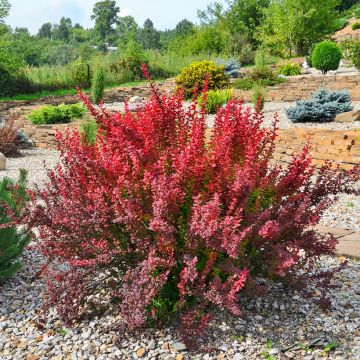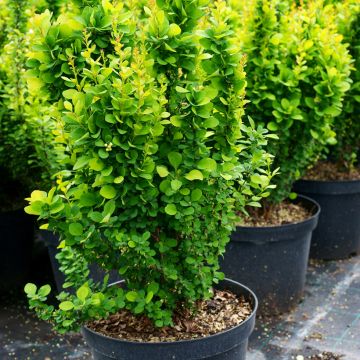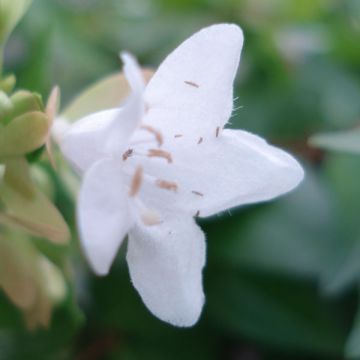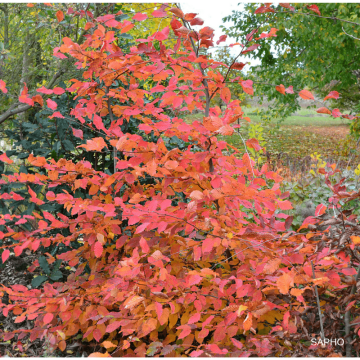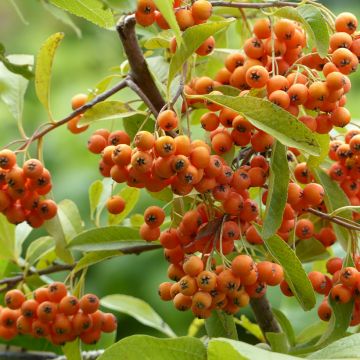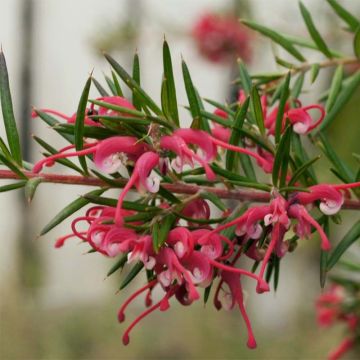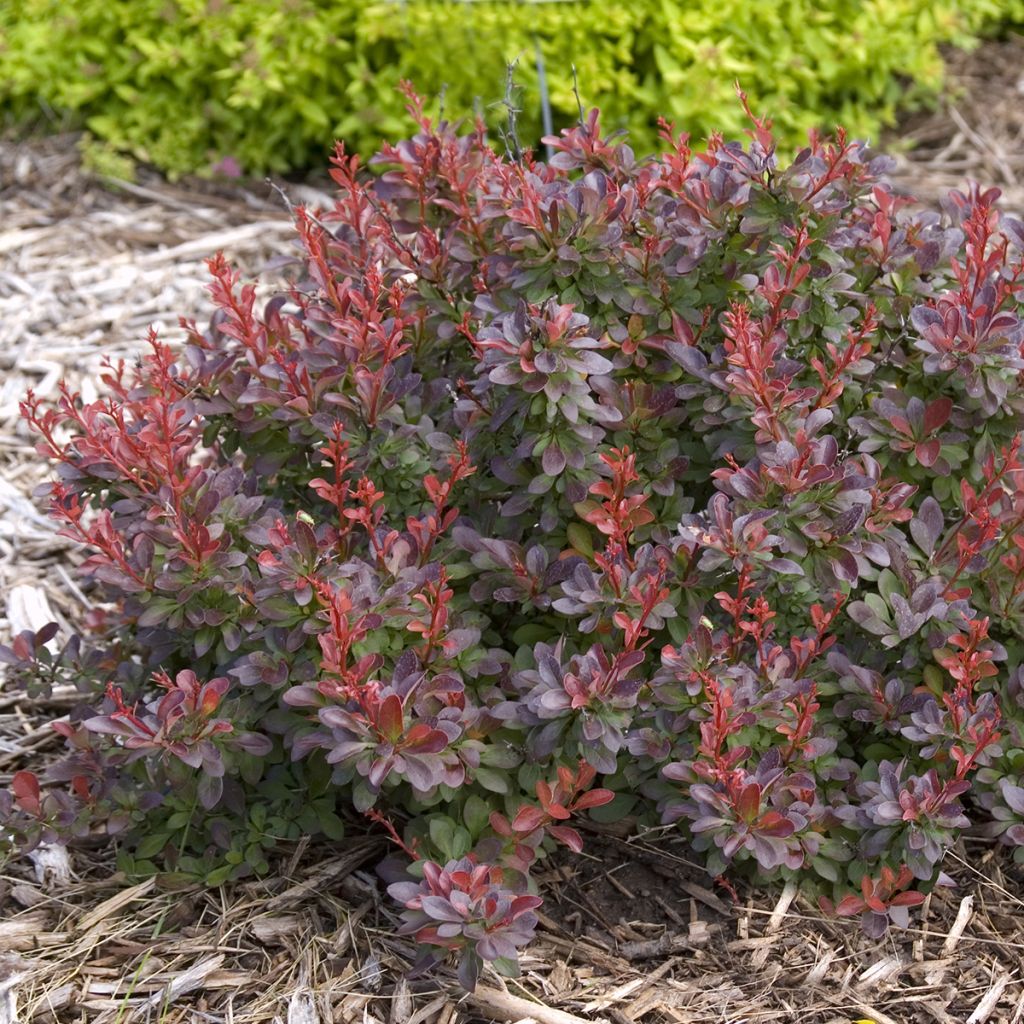

Berberis thunbergii Cabernet - Japanese Barberry


Berberis thunbergii Cabernet - Japanese Barberry


Berberis thunbergii Cabernet - Japanese Barberry


Berberis thunbergii Cabernet - Japanese Barberry
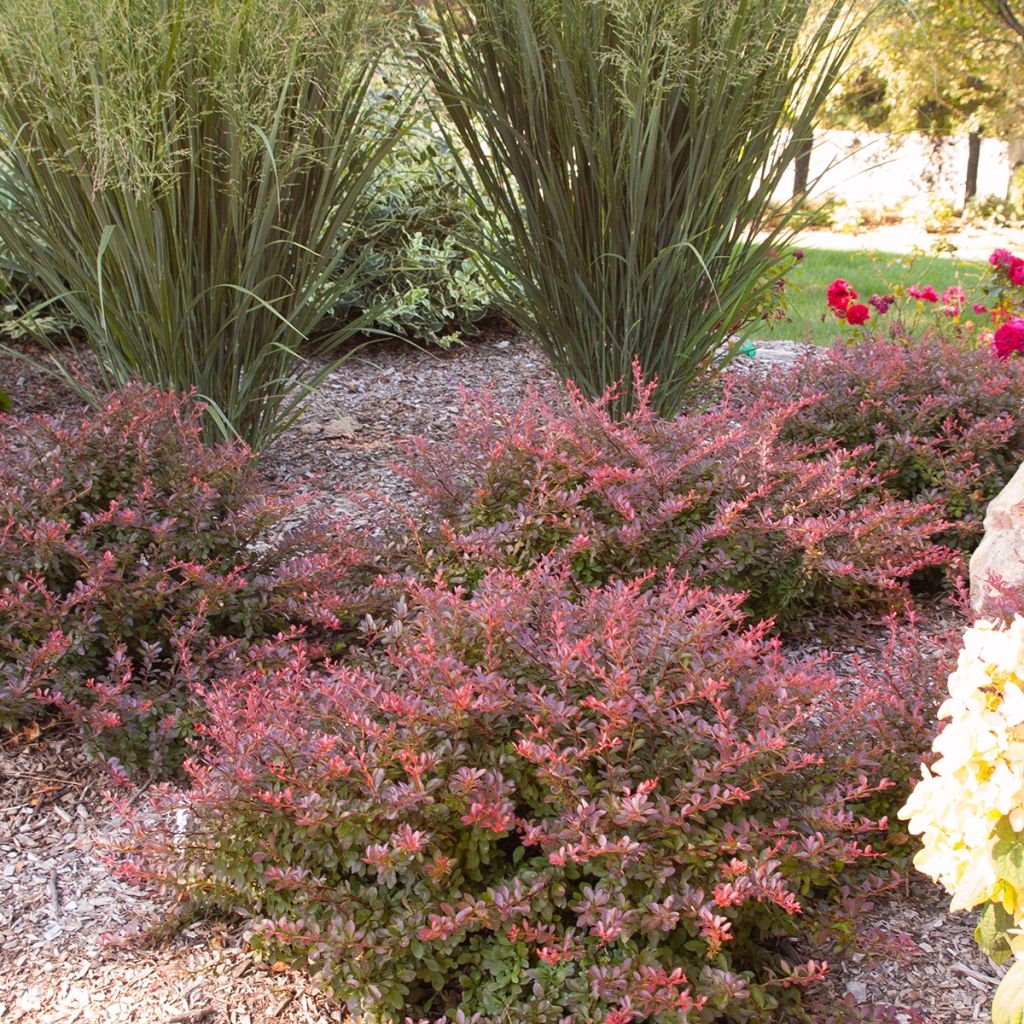

Berberis thunbergii Cabernet - Japanese Barberry
Berberis thunbergii Cabernet - Japanese Barberry
Berberis thunbergii Cabernet® FIRST EDITIONS®
Japanese Barberry, Thunberg's Barberry
This item cannot be shipped to the selected country
Delivery charge from €5.90
More information
Schedule delivery date,
and select date in basket
This plant carries a 24 months recovery warranty
More information
We guarantee the quality of our plants for a full growing cycle, and will replace at our expense any plant that fails to recover under normal climatic and planting conditions.
From €5.90 for pickup delivery and €6.90 for home delivery
Express home delivery from €8.90.
Does this plant fit my garden?
Set up your Plantfit profile →
Description
Berberis thunbergii Cabernet, also marketed under the name Berberis thunbergii Atropurpurea 'Moretti Select', is a variety of barberry that is particularly compact and remarkably colourful from spring to autumn. Its young shoots are a bright crimson red, its leaves a deep burgundy, and its autumn foliage takes on a beautiful, warm yellow hue. With a relatively fine texture, this deciduous shrub stands out from other plants in the garden with less refined foliage.
Thunberg's barberry Cabernet is a shrub of the Berberidaceae family. The species, Berberis thunbergii, also known as Thunberg's barberry or Japanese barberry, is a shrub native to Japan characterised by a spreading, low, bushy habit and deciduous foliage in winter, semi-evergreen in mild climates. It is a hardy and undemanding plant that is water-efficient and can tolerate limestone soils.
Berberis thunbergii Cabernet is a cultivar that stands out for its very dense, compact, and branched habit, wider than it is tall. This spiny, deciduous shrub with multiple stems reaches a height of 60 cm to 75 cm and a width of 60 cm to 90 cm. Its growth is slow, and it can live up to 20 years under ideal conditions. The leaves of this shrub are small, ovate, and measure about 2 cm in length. The young shoots of this 'Cabernet' variety are a bright crimson red, evolving into burgundy to violet foliage. In autumn, the leaves take on yellow to orange-yellow shades. The small, inconspicuous yellow flowers appear in April-May in small pendant clusters. They are visited by pollinators. In autumn, the shrub is adorned with beautiful red berries.
The Cabernet barberry can be used in mass plantings, it also allows helps create large colourful borders and can be easily grown in a large pot on the terrace. This small decorative shrub blends easily into small urban or contemporary style gardens. It can be combined with border roses such as 'Opalia' and 'Bees Paradise Pink' as well as boxwood hedges. In a small shrub bed, plant it with 'Magical Universe' St. John's Wort with decorative dark red berries and Mexican Orange Blossom 'Little Bee', for example.
Report an error about the product description
Berberis thunbergii Cabernet - Japanese Barberry in pictures




Plant habit
Flowering
Foliage
Botanical data
Berberis
thunbergii
Cabernet® FIRST EDITIONS®
Berberidaceae
Japanese Barberry, Thunberg's Barberry
Berberis thunbergii atropurpurea 'Moretti Select'
Cultivar or hybrid
Other Berberis - Barberries
Planting and care
Berberis thunbergii 'Caberbet', hardy to -20°C, can be planted in spring or autumn, in any well-drained soil, even limestone, in a sunny position. Choose partial shade in very sunny and hot regions. Water frequently during the months following planting and during the first two dry summers. No need to feed. It requires little maintenance. For barberries planted as a hedge, balance the shape in spring and September. In informal hedges, prune the branches after flowering to give the bush a rounded, balanced shape. Be careful not to touch the branches with bare hands, as the thorns are difficult to remove once they have entered the skin.
Planting period
Intended location
Care
This item has not been reviewed yet - be the first to leave a review about it.
Hedge shrubs
Haven't found what you were looking for?
Hardiness is the lowest winter temperature a plant can endure without suffering serious damage or even dying. However, hardiness is affected by location (a sheltered area, such as a patio), protection (winter cover) and soil type (hardiness is improved by well-drained soil).

Photo Sharing Terms & Conditions
In order to encourage gardeners to interact and share their experiences, Promesse de fleurs offers various media enabling content to be uploaded onto its Site - in particular via the ‘Photo sharing’ module.
The User agrees to refrain from:
- Posting any content that is illegal, prejudicial, insulting, racist, inciteful to hatred, revisionist, contrary to public decency, that infringes on privacy or on the privacy rights of third parties, in particular the publicity rights of persons and goods, intellectual property rights, or the right to privacy.
- Submitting content on behalf of a third party;
- Impersonate the identity of a third party and/or publish any personal information about a third party;
In general, the User undertakes to refrain from any unethical behaviour.
All Content (in particular text, comments, files, images, photos, videos, creative works, etc.), which may be subject to property or intellectual property rights, image or other private rights, shall remain the property of the User, subject to the limited rights granted by the terms of the licence granted by Promesse de fleurs as stated below. Users are at liberty to publish or not to publish such Content on the Site, notably via the ‘Photo Sharing’ facility, and accept that this Content shall be made public and freely accessible, notably on the Internet.
Users further acknowledge, undertake to have ,and guarantee that they hold all necessary rights and permissions to publish such material on the Site, in particular with regard to the legislation in force pertaining to any privacy, property, intellectual property, image, or contractual rights, or rights of any other nature. By publishing such Content on the Site, Users acknowledge accepting full liability as publishers of the Content within the meaning of the law, and grant Promesse de fleurs, free of charge, an inclusive, worldwide licence for the said Content for the entire duration of its publication, including all reproduction, representation, up/downloading, displaying, performing, transmission, and storage rights.
Users also grant permission for their name to be linked to the Content and accept that this link may not always be made available.
By engaging in posting material, Users consent to their Content becoming automatically accessible on the Internet, in particular on other sites and/or blogs and/or web pages of the Promesse de fleurs site, including in particular social pages and the Promesse de fleurs catalogue.
Users may secure the removal of entrusted content free of charge by issuing a simple request via our contact form.
The flowering period indicated on our website applies to countries and regions located in USDA zone 8 (France, the United Kingdom, Ireland, the Netherlands, etc.)
It will vary according to where you live:
- In zones 9 to 10 (Italy, Spain, Greece, etc.), flowering will occur about 2 to 4 weeks earlier.
- In zones 6 to 7 (Germany, Poland, Slovenia, and lower mountainous regions), flowering will be delayed by 2 to 3 weeks.
- In zone 5 (Central Europe, Scandinavia), blooming will be delayed by 3 to 5 weeks.
In temperate climates, pruning of spring-flowering shrubs (forsythia, spireas, etc.) should be done just after flowering.
Pruning of summer-flowering shrubs (Indian Lilac, Perovskia, etc.) can be done in winter or spring.
In cold regions as well as with frost-sensitive plants, avoid pruning too early when severe frosts may still occur.
The planting period indicated on our website applies to countries and regions located in USDA zone 8 (France, United Kingdom, Ireland, Netherlands).
It will vary according to where you live:
- In Mediterranean zones (Marseille, Madrid, Milan, etc.), autumn and winter are the best planting periods.
- In continental zones (Strasbourg, Munich, Vienna, etc.), delay planting by 2 to 3 weeks in spring and bring it forward by 2 to 4 weeks in autumn.
- In mountainous regions (the Alps, Pyrenees, Carpathians, etc.), it is best to plant in late spring (May-June) or late summer (August-September).
The harvesting period indicated on our website applies to countries and regions in USDA zone 8 (France, England, Ireland, the Netherlands).
In colder areas (Scandinavia, Poland, Austria...) fruit and vegetable harvests are likely to be delayed by 3-4 weeks.
In warmer areas (Italy, Spain, Greece, etc.), harvesting will probably take place earlier, depending on weather conditions.
The sowing periods indicated on our website apply to countries and regions within USDA Zone 8 (France, UK, Ireland, Netherlands).
In colder areas (Scandinavia, Poland, Austria...), delay any outdoor sowing by 3-4 weeks, or sow under glass.
In warmer climes (Italy, Spain, Greece, etc.), bring outdoor sowing forward by a few weeks.



































